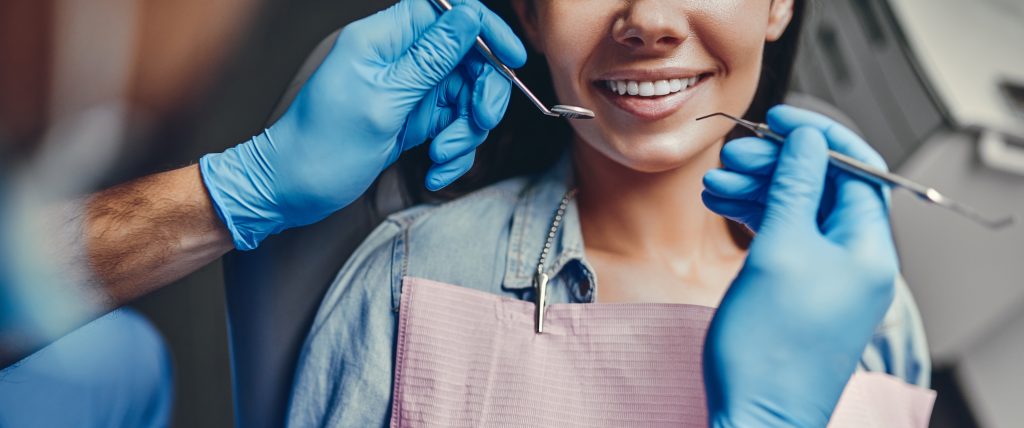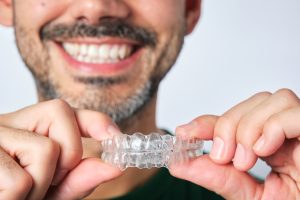There are many ways to diagnose and treat an abscessed tooth, whether it’s a simple home remedy or a professional root canal. In this blog post, we’ll go over what an abscessed tooth is, the symptoms, how the diagnosis is done and how it’s treated – so that you can better understand what you’re going through.
What is an abscessed tooth?
An abscessed tooth is a tooth that has become infected. The infection can be caused by a number of things, including cavities, gum disease, or an injury to the tooth. The infection causes the tissue around the tooth to become inflamed and fill with pus. This can be extremely painful and may require treatment from a dentist or other medical professional.
How is an abscessed tooth diagnosed?
An abscessed tooth is diagnosed by a dentist. They will examine the tooth and take x-rays to determine if there is an infection. If there is an infection, they will prescribe antibiotics and may recommend a root canal.
What are the symptoms of an abscessed tooth?
An abscessed tooth is a serious dental infection. The infection can cause intense pain, swelling, and fever. If the infection is not treated, it can spread to other parts of the body and be life-threatening.
The most common symptom of an abscessed tooth is severe pain. The pain is caused by the pressure of the infection on the nerves in the tooth. The pain may be constant or may come and go. Other symptoms of an abscessed tooth include:
- Swelling in the face
- Redness in the face
- Fever
- Bad taste in the mouth
- Bad breath
If you need a solution to any or all of these issues, you may want to learn more about how ALINA works.
What are the treatments for an abscessed tooth?
There are a few different ways to treat an abscessed tooth. The first is to try and drain the abscess. This can be done by rinsing your mouth with a warm salt water solution several times a day. You can also use a wet, warm tea bag on the affected area for 20 minutes at a time, several times a day.
If the abscess is large, your dentist may need to make a small cut in it to allow the pus to drain out. Once the pus is gone, they will likely put in a temporary filling or crown.
If the infection has spread to the bone around the tooth, you may need antibiotics to clear it up. Your dentist may also recommend that you have the tooth removed if it is severely damaged or infected.
What are the possible complications from an abscessed tooth?
An abscessed tooth is a serious dental condition that can lead to a number of complications if left untreated. The most common complication from an abscessed tooth is infection. If the infection spreads beyond the tooth, it can enter the jawbone and nearby tissue. This can cause severe pain and swelling. Additionally, the infection can spread to other parts of the body if it is not treated promptly. Other potential complications from an abscessed tooth include damage to the surrounding teeth, bone loss, and in rare cases, death.

Is it better to treat an abscessed tooth with a root canal or extraction?
When it comes to abscessed teeth, there are two main treatment options: root canal or extraction. So, which one is better?
Root canal therapy involves removing the infected pulp from the tooth and then sealing it off to prevent further infection. This treatment option can save your tooth and allow you to keep it for years to come.
Extraction, on the other hand, involves completely removing the tooth from your mouth. While this may be the easier option in the short-term, it can lead to problems down the road, such as misalignment of your teeth and difficulty chewing.
So, which option is better? Ultimately, it depends on your individual situation. If you have a severe infection or if your tooth is severely damaged, extraction may be the best option. However, if your tooth can be saved with root canal therapy, that is generally the preferred choice.
Can clear aligners be used after a tooth extraction?
Yes, clear aligners can be used after a tooth extraction. However, it is important to wait until the extraction site has healed before starting treatment. This typically takes about two weeks. Once the site has healed, ALINA technicians will take a scan of your teeth . Afterwards, the scans will be used to make the molds that will shape your aligners. You will then receive your aligners. For more information on the process, consider browsing our FAQs.
Tips for best results when using clear aligners
If you’re considering clear aligners to fill in gaps in the teeth, here are a few tips to ensure you get the best results:
- Follow the instructions provided by your orthodontist or dentist. This will include wearing the aligners for at least 22 hours per day and only removing them for eating, drinking, brushing and flossing.
- Clean your aligners regularly. Plaque and bacteria can build up on aligners just like they do on teeth, so be sure to brush them with a soft-bristled toothbrush and mild soap or cleanser every day.
- Be gentle when putting in and taking out your aligners. Forcefully popping them in or out can damage the aligners and delay your treatment timeline.
- Don’t forget to brush and floss your teeth! Just because you’re wearing aligners doesn’t mean you can neglect your regular oral hygiene routine. Be sure to brush twice a day and floss once a day to keep your teeth and gums healthy throughout treatment.
How ALINA can help patients who’ve had abscesses
Abscesses can be a huge pain, especially if the teeth they affect need to be pulled out. Luckily with ALINA, patients can be sure that their teeth become aligned and stay aligned, avoiding further issues that can stem from gaps between teeth. That’s because our invisible braces are made with:
- Better materials – Our invisible braces are made from a perfectly transparent, space-age material that’s FDA approved and completely hypoallergenic.
- Better technology – With AlinaSmile AI technology, ALINA takes into consideration all of your facial features to help you achieve your most beautiful smile.
- Better results – Over 25 years, ALINA has helped uncover the smiles of more than a million happy patients in the US, Canada, and the UK.
Take the first step to uncovering your most beautiful smile and book a consult today.






